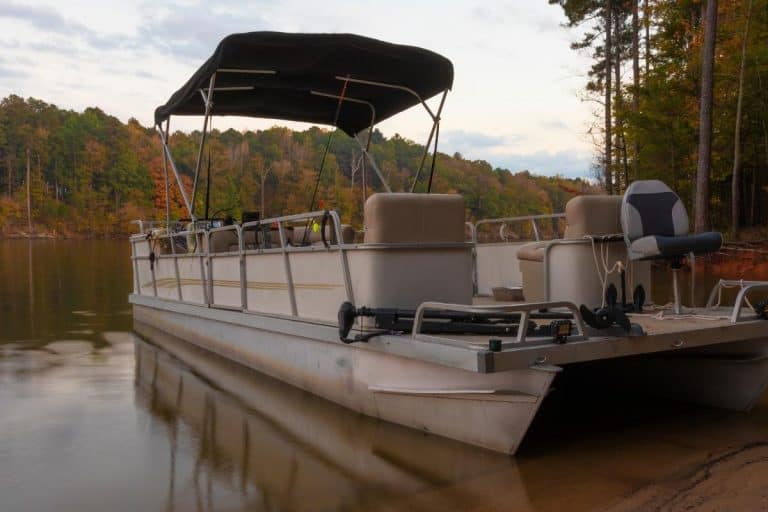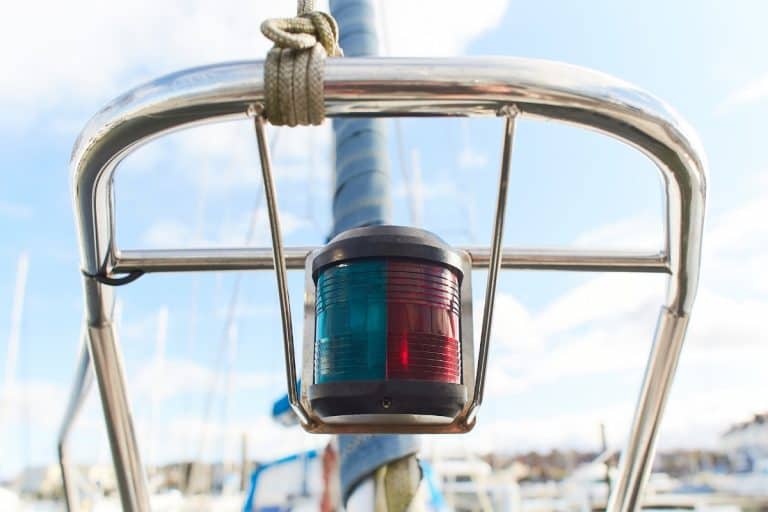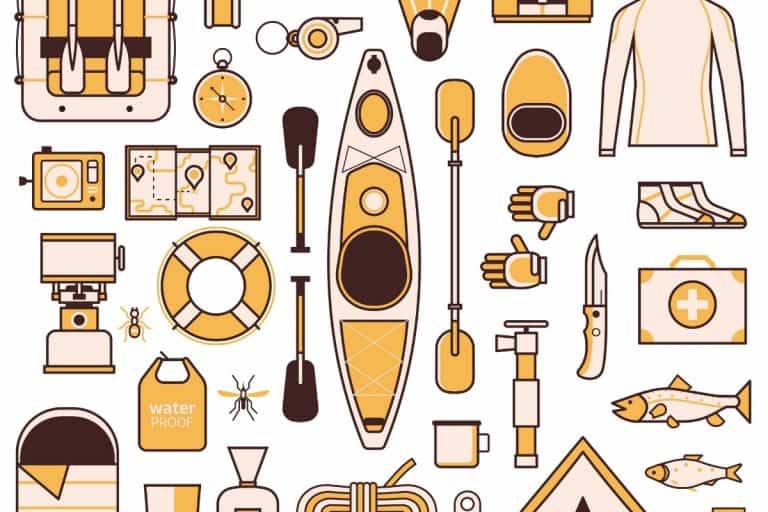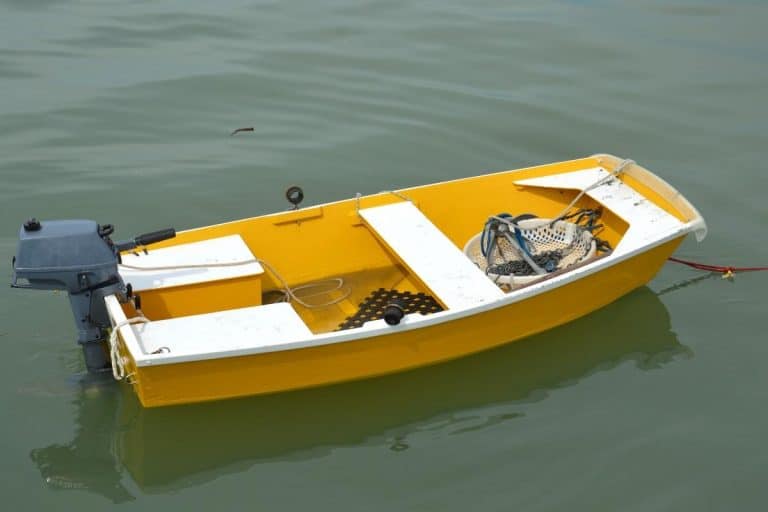Boat Fenders And Boat Bumpers: Why Your Boat Needs Both!

Boat fenders and boat bumpers often get lumped in together, which can convince some boaters that they’re the same thing or that they can be used interchangeably. In today’s boat accessories article, I’ll explain exactly why your boat needs both.
Why does your boat need both fenders and bumpers? Boat fenders and bumpers add an extra layer of cushioning and protection to your boat and can prevent damage if your boat happens to bump into another when both are tied up at a dock.
In today’s boating guide, I’ll explain what boat fenders and boat bumpers are as well as why your boat needs both. Then I’ll delve into their benefits and even recommend a couple of my favorite products. Make sure you check it out!
What Is a Boat Fender?
Let’s begin by discussing boat fenders, shall we?
A boat fender doesn’t look anything like the fender you see on your car or truck, although it more closely resembles the vehicular equivalent than a boat bumper does.
Speaking of bumpers, this is where a lot of confusion arises. You see, many boaters assume that boat bumpers and boat fenders are the same, but they aren’t.
Bumpers are cylindrical (usually) whereas fenders are rectangular, or, at the very least, square-shaped.
A fender is technically a bumper, and a bumper can be a fender, if that makes sense. If it doesn’t quite yet, I promise that it will by the time you’re done reading.
Most fenders are made of EVA foam. They’re flat and long and attach to the side of your boat.
You can mount the fender higher on the boat over the dock or midway down the boat so it covers to the bottom of where your boat is protruding from the water.
Some fenders feature integrated cutouts that safeguard your boat from cleats and dock lines.
What Is a Boat Bumper?
What is a boat bumper?
A boat bumper is a (usually) cylindrical fender that you dangle off the side of your vessel with a rope.
The low reactivity force and high rate of energy absorption of boat bumpers allow them to absorb the passing kinetic energy of vessels that may be moored close to your boat.
Bumpers can be made of several materials, including plastic, foam elastomer, or rubber.
Rubber bumpers may be produced using a pre-sized mold or are extruded and then manufactured.
Bumpers come in all sorts of types besides the traditional cylindrical shape. Let’s go over the various types now.
- Floating Rubber Bumper
A floating rubber bumper is more common on shipboard equipment than boats but is still an option, nevertheless.
These solid rubber bumpers can deform and compress to absorb energy, and they’re known for their simple installation, sail-friendliness, and low reactivity force.
- Tugboat Bumper
Intended for tugboats, a tugboat bumper is extra-resilient and very abrasion-resistant.
To produce a tugboat bumper, the materials are compression-molded using a high-pressure mold that undergoes thermic fluid heating.
The seawater resistance of a tugboat bumper is another standout.
- Keyhole Bumper
If not a tugboat bumper itself, then you might see a keyhole bumper on a tugboat as well as small port ferries.
Capable of absorbing great loads, the design of this bumper makes it advantageous to boats with a profile like a tugboat.
- Square Bumper
Jetties, ships, boats, and tugboats might utilize a square bumper, which is a compression-molded bumper that can resist UV and ozone damage. These bumpers also offer great seawater resistance.
- Corner Bumper
A corner bumper is attached to a dock rather than the boat itself. These bumpers are designed with a 45-degree angle and may feature steel inserts.
- D-Bumper
A D-fender or D-bumper is designed for smaller boats.
Produced of solid and hollow portions of extruded rubber and featuring an EPDM compound, a D-bumper resists weather and water damage well.
- Hydro-Pneumatic Bumper
Known in full as a submarine hydro-pneumatic fender or SHPF, these bumpers have been around since the 1980s.
The shape of the bumper is designed so it’s always vertical when in the water. These bumpers are made for submarines.
- Pneumatic Bumper
A pneumatic bumper is built for ships transferring to other ships, so they’re another type that you won’t use in your day-to-day boating.
Pneumatic bumpers are known for their load-deflection abilities and energy absorption rates.
- Arch Bumper
A step up from the traditional cylindrical bumper, an arch bumper is multifunctional, has a good reaction and energy force ratio, and can dissipate energy well.
Boat Fenders And Boat Bumpers: Why Your Boat Needs Both!
All nature of boats uses fenders, bumpers, or even both, from yachts to ferries, cruise ships, and cargo ships.
Why are fenders such a common sight at docks and boatyards? Here are the benefits.
Provides UV Protection
As you’ll recall from the prior two sections, many boat fenders and bumpers offer UV protection or at least some degree of UV resistance.
That doesn’t mean you can forego a boat cover once the active boating season comes to an end, of course.
The bumper or fender only covers so much of the boat, even if you use several bumpers or fenders at once.
However, with the addition of a fender or bumper, you can rest assured that your boat has at least some degree of UV protection. Some is always better than none!
Adds Some Personality to Your Boat
Bumpers and fenders come in so many shapes, styles, and covers, but that’s not the only way that you can express yourself through these protective boat features.
Some fenders and bumpers use covers that you can install for even more creativity and personality!
Safeguards Your Boat When Docking
By far the biggest benefit and the reason that boaters use both fenders and bumpers is to protect their boat when docking it.
Once you leave your boat at a dock, even if it’s tied up and anchored well, you can never say what will happen with 100 percent certainty.
Could another boat hit yours? Yes, especially in strong weather or if the boat owner didn’t anchor their boat properly.
Although the two boats would collide at very low speeds, that doesn’t necessarily matter. Boat damage is still boat damage.
The damage may not be severe at first, but if the two boats bump into each other continually for hours or even days or weeks (it depends on how often you’re out to check your boat), then the damage can become worse.
Boat fenders and bumpers are designed to absorb the brunt of the impact so your boat doesn’t have to. You’ll come back to a boat with fewer if any dings and scratches.
The Top 5 Boat Fenders and Boat Bumpers
Have you decided that investing in both bumpers and fenders is the right call for the longevity of your boat? I would agree!
Here are 5 of my top recommendations for bumpers and fenders.
NautiCurl NautiFender
The NautiFender by NautiCurl is a boat fender available for under $50.
This reversible fender features a tapered, flat design with integrated diamond-shaped cutouts that reduce cleat and dock line interference.
Eight attachment points throughout the NautiFender are configurable for attaching to boat rails, dock pipes, or boat cleats.
According to NautiCurl, the NautiFender is compatible with many types of boats, including personal watercraft, runabouts, sailboats, fishing boats, pontoon boats, and wakeboard boats.
The dual-layered EVA foam is durable, fade-resistant, and great at cushioning. UV resistance will protect your boat from the sun.
You can select from two sizes, medium (20 inches by eight inches by two inches) or large (23 inches by 10 inches by 3.5 inches).
The available colors for both sides are as follows: the Midnight Teak Series (Midnight Black Face, Graphite Center Core, or Teak Face) and the Phantom Series (Gunmetal Gray Face, Graphite Center Core, or Fog Gray Face).
Taylor Made Products Super Gard Inflatable Vinyl Boat Bumper
You might already use other Taylor Made products for your boat. You can trust in the Super Gard inflatable vinyl boat bumper, which costs under $185.
Select from four sizes: 5.5 inches by 20 inches, 6.5 inches by 22 inches, 8.5 inches by 26 inches, or 10.5 inches by 30 inches.
The size of the boat bumper does influence the price, as you can get a bumper for as little as $25.
Produced in the United States, the Super Gard bumper features a single-piece construction with a molded-in valve. The ribbed sides reduce the rate of roll.
An included rubber football needle allows you to easily inflate the Taylor Made boat bumper anytime. The bumper will arrive on your doorstep already inflated.
The back ends are double-molded for better durability and strength while the high-gloss finish of each bumper is quite appealing.
You can choose from an assortment of colors, including black, yellow, white, tan, red, lime green, orange, navy blue, hunter green, purple, and blue.
Bass Pro Shops Boat Bumper
How about a four-pack of boat bumpers? This set from Cabelas is available for under $50.
Each bumper features a high-impact design with reinforced eyelets for heavy-duty usage.
UV protection safeguards your boat from the sun’s damaging rays.
Included with the bumpers is solid-braid multi-filament polypropylene or MFP rope for easily mounting the bumpers precisely where you want them.
The bumpers measure 60 inches long by 3/8 inches wide and are available in white. Each is inflatable.
Seachoice Twin Eye Ribbed Boat Bumper
The Seachoice twin eye ribbed boat bumpers are another low-cost set of bumpers available for under $20 a pop.
Each bumper is 6.5 inches by 23 inches and features an eye diameter of ¾ inches.
The marine-grade vinyl used to construct the bumper is soft and strong. This bumper is recommended for boat topsides and hulls, especially for boats that are between 20 and 25 feet long.
The bumper comes in one color, white.
Mission Boat Gear Sentry Boat Fender
I also quite like the Mission Sentry boat fender, which is built from XL EXTRALIGHT material.
XL EXTRALIGHT is a type of closed-cell foam that’s very durable and quite lightweight as well.
The EXL EXTRALIGHT patented material is chemical and saltwater-resistant, UV-resistant, waterproof, non-staining, and non-marking. It also cleans easily.
The lower hanging point of this fender means the Sentry sits at an angle so it looks almost like it was designed for the natural contouring and curving of the hull.
To hook it up, all you have to do is attach the fender at the boat dock or cleat using the integrated straps, no ropes required!
The Mission Sentry fender is available for under $75 and comes in such colors as Risk Averse Grey (light grey), Blue Lagoon (light blue), Atomic Yellow (neon yellow), and Almost Black (dark grey).





